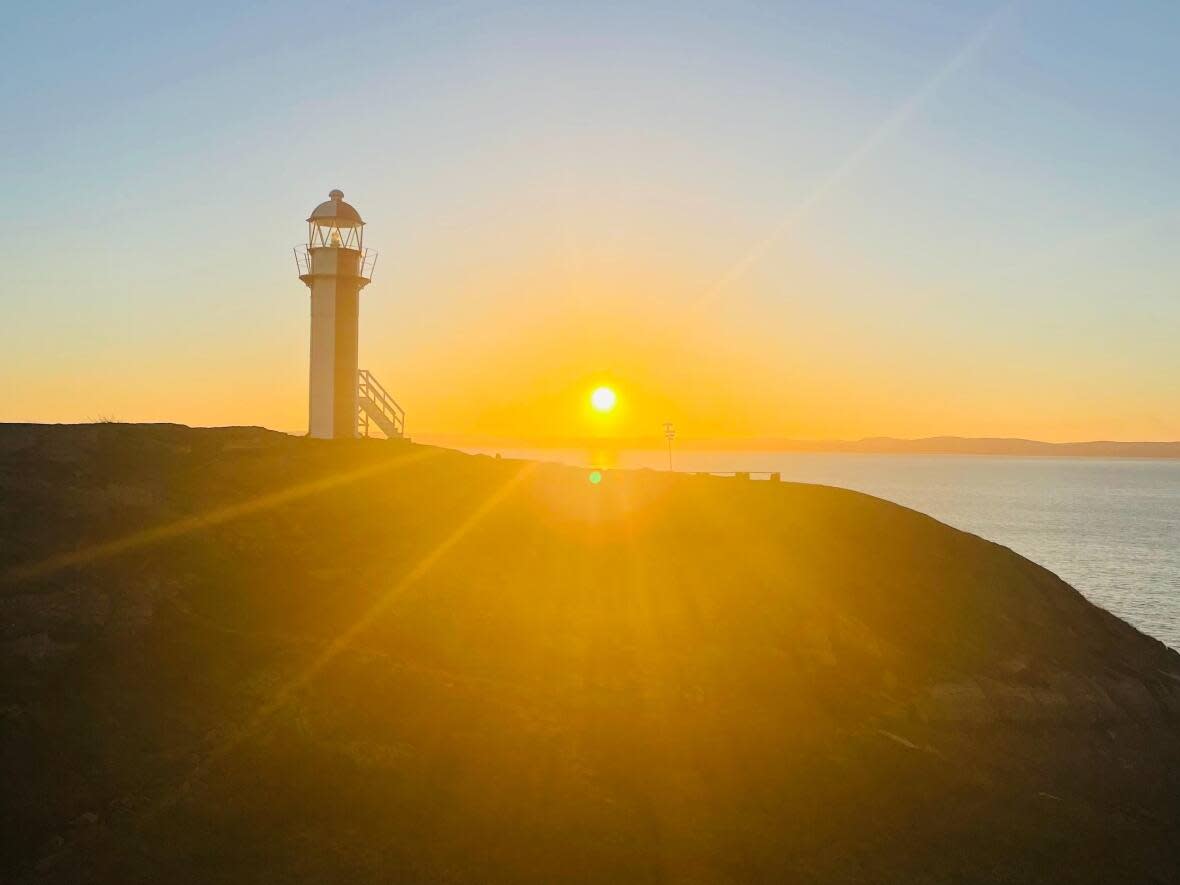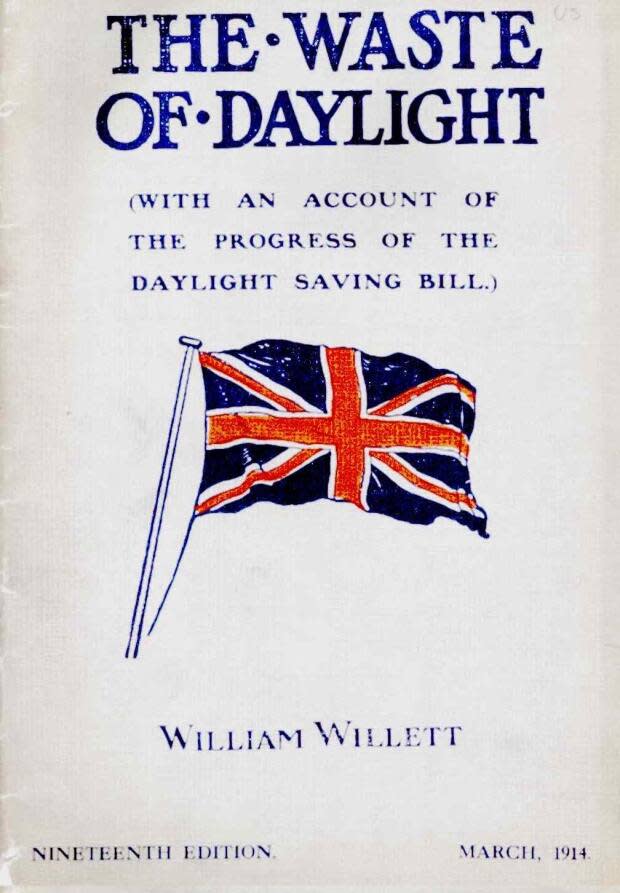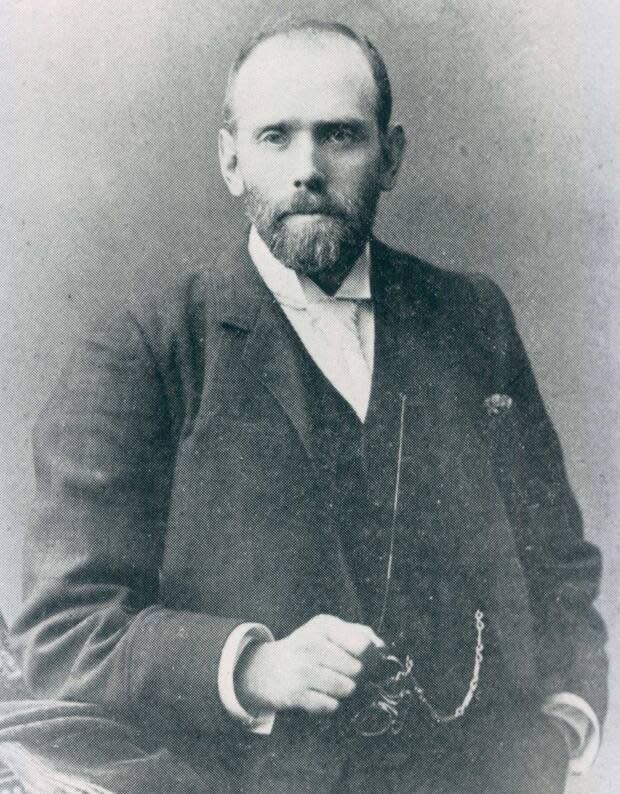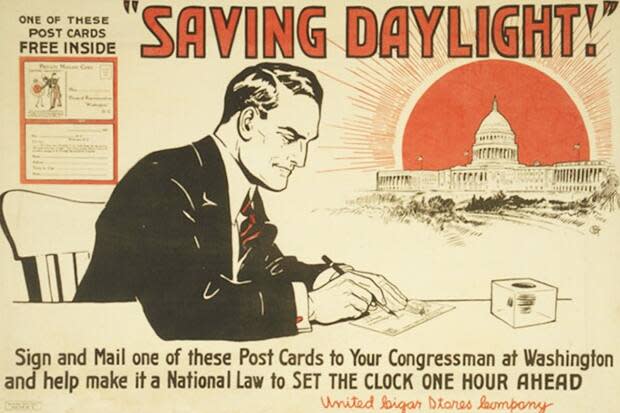How Newfoundland became the first country in the Americas to adopt daylight time

With a time zone half an hour ahead of the rest of the continent, Newfoundlanders and some Labradorians will be the first North Americans to turn their clocks ahead tonight.
What you might not realize is that Newfoundland was also the first country in the Americas to officially adopt daylight time, or daylight saving time, more than a century ago.
The idea of adjusting clocks to coincide with sunlit hours was first proposed by New Zealand entomologist George Vernon Hudson in 1895. At the time, Hudson's suggestion to shift two hours forward over the summer was roundly mocked, but the concept was revived in 1907 by English builder William Willett.
Willett was out horseback riding one bright summer morning when he was struck by the fact that most of his neighbours were still asleep and, by the time they got home from work, would find the sun nearly set. In a pamphlet called "The Waste of Daylight," he explained how, by the simple expedient of advancing standard time, everyone could spend more of their waking hours in daylight.

We often attribute the invention of daylight time to a desire to conserve electricity (which did become a consideration during the First World War) or to some obscure need of farmers (who, already accustomed to rising with the sun regardless of the hour on the clock, didn't care much one way or another).
But in fact, Willett was most concerned with public health and well-being, writing, "While daylight surrounds us, cheerfulness reigns, anxieties press less heavily, and courage is bred for the struggle of life. Against our ever-besieging enemy, disease, light and fresh air act as guards in our defence, and when the conflict is close, supply us with most effective weapons with which to overcome the invader."
Willett's pamphlet made it into the hands of a man named John Anderson, a Newfoundland dry goods merchant and noted math enthusiast who was in London on a business trip. Anderson arranged for a meeting with Willett and quickly became a convert to daylight time.
Willett had originally proposed that the time shift should happen gradually, by 20 minutes on each of four consecutive Sundays in April, for a total time change of 80 minutes. Anderson persuaded him that a one-time adjustment of one hour would be easier to implement, and daylight time as we know it was born.

Anderson was in a unique position to promote daylight time. Not only was he a businessman, he was also a member of Newfoundland's legislative council, a parliamentary body akin to the Canadian Senate.
At the time, Newfoundland was — like Canada — a dominion of the British Empire and functioned as an independent state. Anderson introduced daylight time bills in 1909 and 1910, but it wasn't until 1917 that the idea gained traction.
Several Canadian cities had by then experimented with daylight time, but implementing it at a municipal level created chaos for train schedules and inter-city trade.
In 1916, at the height of the First World War, a number of European nations including Great Britain finally adopted daylight time to support the war effort, giving Anderson the credibility to put another daylight time bill before the Newfoundland House of Assembly.
Still, not all members were on board.
Walter Jennings, a fisherman by trade and representative for Twillingate, quipped, "I fail to see how you can make a board longer by sawing a piece off one end and putting it on the other," while William Coaker, leader of the opposition, felt the daylight time bill was a measure that would only benefit the well-heeled townies of St. John's.
"Men who play on the golf links of course may want longer daylight," Coaker remarked, "but I am sure that outport people do not desire it."

From Anderson's perspective, though, it was Newfoundland's lower classes — its factory, shop, and office workers — who stood to benefit most from daylight time.
"This might safely be called the bill for working men and their families," he said, "on whom the effect of one hour more sunlight daily for 110 days must lead to an improvement in health and consequent advantage to children."
The Daylight Saving Act passed and became law on June 17, 1917, making Newfoundland the first country in the Americas to observe daylight time.
By fall, an editorial in the Evening Telegram newspaper proclaimed daylight time, known locally as "Anderson time," an "unmixed boon." As for Anderson himself, he had already set his sights even higher, arguing in a letter to the editors of the New York Times that the United States and Canada should "join the rest of the world" in adopting daylight time.
Today, there's a movement to end our semi-yearly time changes either by scrapping daylight time or by keeping it year-round.
Due to advances in technology, most of our energy now powers not light bulbs but electronics, which aren't affected by daylight hours. There are health concerns, too, as moving clocks ahead in spring has been linked with an increased incidence of heart attacks, car accidents, workplace injuries and miscarriages.
Anderson would surely encourage us not to be tied to tradition, but to make time serve us.
As he said in 1917: "Time is almost like a variety store.… You have solar time from the sun, sidereal time from the stars, local time from the meridian; apparent time from the solar; mean time from Greenwich or standard time of any country.… There is no such thing as the right time — we fake it."


